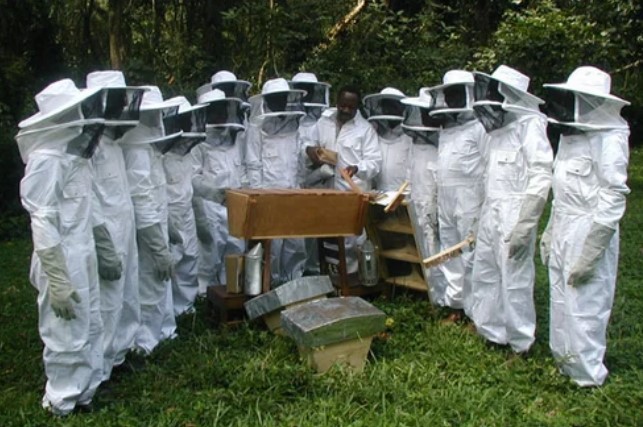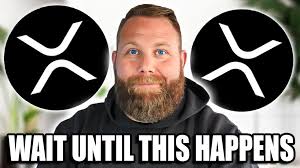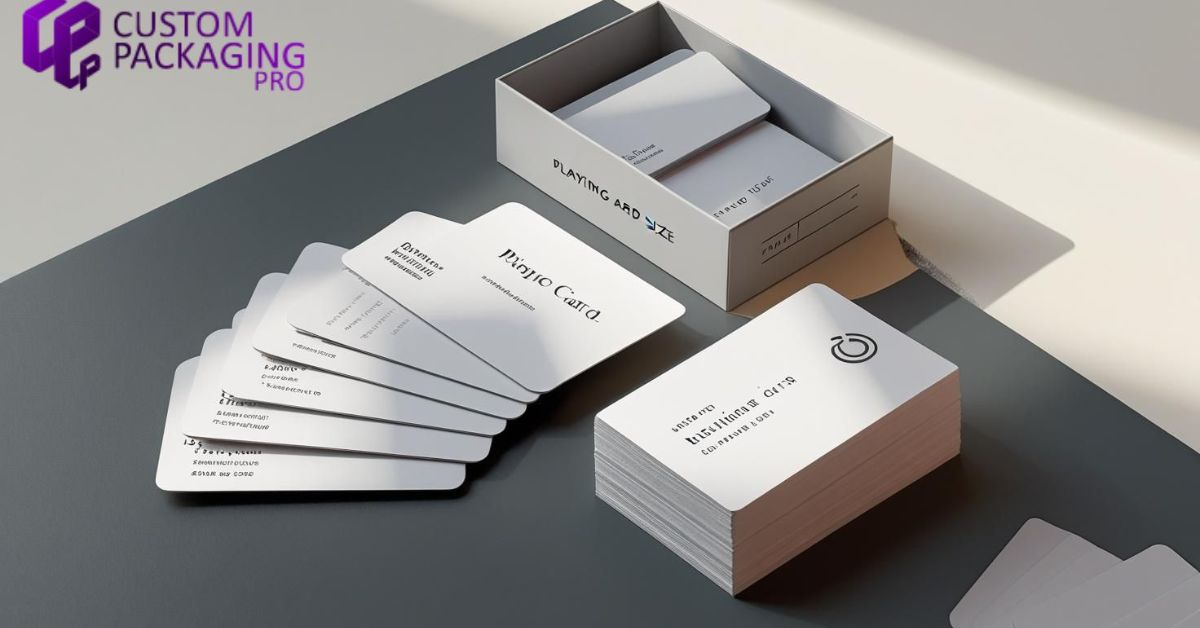BUSINESS
Suiting Up for Success: The Importance of a Beesuit in Beekeeping

Beekeeping, often called apiculture, is an age-old practice that has fascinated humankind for centuries. With its rich history and the allure of sweet honey, beekeeping is as rewarding as it is challenging. But behind the idyllic image of beekeepers harvesting golden honeycomb lies a complex interaction between humans and bees. One essential aspect of this relationship is protection, and nothing embodies this more than the beesuit. In this article, we’ll dive deep into why the beesuit is so crucial for successful beekeeping, how it has evolved over the years, and how to choose the best one for your needs.
A Brief History of Beekeeping and Protective Gear
Beekeeping isn’t new. In fact, it dates back thousands of years to ancient civilizations like the Egyptians, Greeks, and Mayans. These early beekeepers lacked the sophisticated equipment we have today, including protective suits. Instead, they relied on smoke and sheer bravery to manage their hives.
As beekeeping became more widespread and systematic, the need for protective clothing became obvious. The first recorded mention of protective beekeeping gear dates back to the 16th century, where simple veils were used to cover the face and neck. However, it wasn’t until the 1800s that a more comprehensive beesuit resembling the modern version was developed. Over time, beesuits have evolved into the full-body, high-tech protective gear we see today, making beekeeping safer and more accessible for people worldwide.
Why Beesuits Matter in Beekeeping
At first glance, a beesuit might seem like a cumbersome or unnecessary piece of equipment. However, its importance cannot be overstated. Beekeeping, while deeply rewarding, comes with inherent risks—particularly the threat of bee stings. While most bees are not inherently aggressive, they will defend their hive when threatened. A well-designed beesuit minimizes the risk of getting stung, which can be crucial not only for comfort but also for health.
Protection from Bee Stings
The most obvious reason for wearing a beesuit is to protect yourself from bee stings. Bee stings, while typically not life-threatening to most people, can be extremely painful and cause allergic reactions in some individuals. In rare cases, people can go into anaphylactic shock after being stung, which can be fatal without immediate medical attention.
Beesuits act as a physical barrier between the beekeeper and the bees, preventing stingers from reaching the skin. This is especially important when dealing with aggressive or defensive colonies, or during hive inspections that may disturb the bees and provoke defensive behavior.
Building Confidence and Reducing Anxiety
Wearing a beesuit doesn’t just protect the body—it also safeguards the mind. Knowing that you are protected from potential stings can significantly reduce anxiety and stress during hive inspections. This is especially important for novice beekeepers who might be more hesitant or nervous around large numbers of bees.
When beekeepers feel safe, they are more likely to be calm and methodical in their approach, which is beneficial for both them and the bees. Bees can pick up on human emotions, and if you are anxious or make sudden movements, the bees are more likely to become agitated. A calm beekeeper results in calmer bees, making the entire process smoother.
Reducing Aggressive Behavior in Bees
Believe it or not, beesuits can actually influence bee behavior. Bees are highly sensitive to smells, colors, and movements. Light-colored beesuits, typically white or off-white, are less likely to provoke aggressive behavior because bees associate darker colors with predators, like bears. By wearing a light-colored beesuit, you are less likely to be perceived as a threat.
Additionally, the beesuit helps reduce the scent of human sweat, which can trigger defensive behavior in bees. Beesuits are often made from materials that don’t trap odors, making the bees less likely to perceive you as a foreign invader.
Preventing Harm to Bees
An often-overlooked benefit of beesuits is that they help prevent harm to the bees themselves. When a beekeeper gets stung, it can disrupt the entire colony and provoke more aggressive behavior from other bees. Each bee that stings a human will die shortly after, as the act of stinging rips out the bee’s stinger and part of its abdomen. By wearing a beesuit, you reduce the number of defensive stings and, in turn, the number of bees that die unnecessarily.
Providing Practical Functionality
Modern beesuits come with features that go beyond just protection. Many are designed with additional pockets, tool loops, and ventilation to make hive management more efficient and comfortable. These small design details can make a big difference during long beekeeping sessions, allowing beekeepers to carry tools, smokers, or even jars of honey without having to return to their supplies constantly.
Some beesuits are also designed with special mesh panels that allow for greater airflow, keeping beekeepers cooler during the hot summer months when beekeeping activities are at their peak.
Key Features of a Good Beesuit
Not all beesuits are created equal. When choosing the right beesuit for you, there are several factors to consider. Here are the key features that make for a reliable, functional, and comfortable beesuit:
Material
The material of the beesuit is perhaps its most critical feature. Beesuits are typically made from a combination of cotton, polyester, or a synthetic blend. Cotton is breathable and comfortable, making it ideal for hot climates. However, cotton suits can sometimes be bulkier and heavier. Polyester or synthetic blends tend to be lighter and more durable but may trap heat.
Some beesuits are made with triple-layer mesh material. This mesh creates a protective gap between the outer and inner layers, making it difficult for bees to get their stingers through. This type of beesuit is excellent for beekeepers in warm regions who need maximum airflow while still being protected.
Ventilation
Since beekeeping often occurs in warm weather, ventilation is a vital feature of any beesuit. Many modern beesuits come with mesh panels or specific vents to allow air circulation while still providing sting protection. Without adequate ventilation, wearing a beesuit for extended periods can lead to overheating, which can make beekeeping uncomfortable or even dangerous.
Veil and Hood Design
The veil is a crucial part of the beesuit as it protects the face and neck from stings. Veils come in different designs, including round veils, fencing veils, and collapsible veils. A good veil should provide full coverage without obstructing vision.
The design of the hood and veil should also prevent bees from getting inside. Beesuits typically have secure zippers and elastic bands to keep the veil tightly attached to the rest of the suit, reducing the risk of bees sneaking in. Some suits have elasticized wrist and ankle cuffs to further seal off potential entry points for bees.
Durability and Reinforcement
Beekeeping is a hands-on activity, so your beesuit needs to be durable. Look for suits with reinforced seams, especially around areas that experience frequent movement or strain, such as the knees and elbows. Durability also comes into play when washing the suit regularly, as it will be exposed to sweat, dirt, and honey. A well-made beesuit should hold up to repeated use and washing without fraying or weakening.
Fit and Comfort
Comfort is crucial when it comes to beekeeping, especially if you’re going to be spending hours in your suit. The suit should be loose enough to provide a comfortable range of motion while still fitting securely to prevent bees from entering. Some beesuits come with elastic or adjustable straps around the wrists, ankles, and waist to ensure a snug fit.
Since beekeeping often requires crouching, bending, and lifting, having a suit that allows for flexibility is essential. Tight or poorly fitting beesuits can make these tasks more challenging and even dangerous.
Ease of Use and Maintenance
Finally, consider how easy the beesuit is to put on, take off, and clean. Zippers, Velcro, and elastic closures should be easy to use while still providing a secure seal against bees. A beesuit that is machine washable will save you time and effort, especially after long beekeeping sessions when your suit might be dirty or sweaty.
Choosing the Right Beesuit for You
Now that we’ve covered the essential features, how do you go about choosing the right beesuit? Consider the following factors:
Your Beekeeping Environment
Are you keeping bees in a hot, humid climate, or are you working in cooler temperatures? If you’re in a hot region, you’ll want a beesuit with plenty of ventilation and made from lightweight material. In contrast, beekeepers in cooler areas may prioritize thicker, more insulated suits for warmth.
Your Experience Level
If you’re a novice beekeeper, you may want a suit with maximum protection and coverage to help build your confidence. More experienced beekeepers might feel comfortable with a lighter, more breathable suit that offers slightly less protection but allows for greater mobility.
Hive Management Style
Some beekeepers prefer to work closely with their bees, inspecting hives frequently and interacting with the colony up close. Others may take a more hands-off approach. If you plan to spend a lot of time near your hives, you’ll want a suit that balances protection with comfort and durability.
Budget
While it’s tempting to go for the cheapest beesuit available, keep in mind that investing in a high-quality suit can save you money in the long run. A well-made beesuit will last longer, provide better protection, and be more comfortable than a budget option. That said, there are beesuits available at a variety of price points, so you should be able to find one that fits your budget while meeting your needs.
Conclusion: Suiting Up for Success in Beekeeping
In the world of beekeeping, the beesuit is more than just a protective layer—it’s a symbol of respect for the delicate relationship between humans and bees. It provides safety, builds confidence, and allows beekeepers to focus on the art and science of maintaining healthy hives. By choosing the right beesuit and suiting up properly, you set yourself up for success in beekeeping, ensuring a safe, productive, and enjoyable experience for both you and your bees.
BUSINESS
How Often Should You Visit the Dentist? Insurance-Friendly Tips

General Recommendations for Dental Visits
How often you need to visit the dentist isn’t always clear-cut. The long-standing rule was to see your dentist two times a year for checkups and professional cleanings. This twice-yearly schedule promotes early detection of dental concerns, such as tooth decay, gum disease, and oral cancer, making treatment easier and less invasive. By catching problems before they can worsen, you can often avoid more complex and expensive procedures.
For those with chronic conditions, such as diabetes, or a past incidence of cavities and gum disease, dental professionals often suggest more frequent check-ins, sometimes every three to six months. This shorter interval allows your dentist to closely monitor healing, disease progression, and the effectiveness of your home care routine. Many dental insurance policies, especially comprehensive options like Delta Dental PPO insurance in Florida, are designed to support regular preventive care, making it easier to stick to the right schedule without unexpected costs. If you’re unsure how often you should go, talk with your dentist about individual risk factors and how other health issues, such as pregnancy or medication use, may influence your needs.
Factors Influencing Visit Frequency
Your unique health profile determines how often dental appointments should be booked. Consider these influencing elements:
- Oral Health Status: Past or current dental problems, such as recurring tooth decay, enamel erosion, or gum disease, require closer monitoring. Some patients are more prone to cavities or periodontal disease due to genetic factors, medications, or underlying medical conditions.
- Overall Health: Illnesses like heart disease and autoimmune conditions may necessitate more frequent dental oversight. Evidence shows a strong connection between oral and systemic health; conditions like diabetes can influence gum health, so regular dental evaluations are essential.
- Lifestyle Choices: Smoking, high sugar intake, and poor oral hygiene increase the risk of issues and warrant more regular exams. If you suffer from dry mouth due to medications or treatment (like radiation therapy), you may also be at higher risk for oral health problems.
For those at low risk, which means you practice good oral hygiene, have no history of dental disease, and maintain a balanced diet, annual or twice-yearly visits may suffice. Always consult your dentist to determine an individualized care plan based on these factors, and don’t hesitate to ask about what schedule best fits your life and health status.
Maximizing Dental Insurance Benefits
Dentists urge patients to make the most of their dental insurance coverage, which can significantly impact treatment decisions and costs. Many often leave benefits unused, potentially missing out on essential preventive care that their plan covers. Here are effective ways to maximize your benefits:
- Stay In-Network: Choose a provider within your insurance’s network for lower co-pays, as insurers have pre-negotiated rates with participating dentists. Out-of-network care often means higher out-of-pocket costs, so consult your insurance portal to find a suitable dentist.
- Strategic Treatment Planning: If you need extensive dental work, consider spreading treatments over the end and beginning of two calendar years to take advantage of annual benefit resets. By doing this, you may be able to use two years’ worth of benefits to cover procedures, reducing your expenses.
- Utilize Tax-Advantaged Accounts: Flexible Spending Accounts (FSAs) and Health Savings Accounts (HSAs) can be used to pay for eligible dental expenses with pre-tax dollars; track deadlines to avoid losing unused funds. These accounts are especially valuable if your plan limits covered treatments or you need elective procedures.
Review your insurance benefits annually and discuss with your dentist to optimize preventive and necessary care. Many dentists will even help you navigate paperwork to ensure your treatment is as affordable as possible, so don’t hesitate to ask their office staff for guidance.
Preventive Care: A Cost-Effective Approach
Preventive dentistry is your best defense against high dental costs and health problems. Regular dental cleanings and examinations can help catch cavities, gum problems, and oral cancers before they progress. Early detection leads to simpler, less invasive, and less expensive treatments. Most dental plans cover these visits at 100%, making them the most cost-effective way to maintain oral health. Even if you’re paying out of pocket, prevention is much lower than the cost of treating problems left to worsen over time.
Preventive Services Often Covered
- Professional cleanings to remove hardened plaque and tartar that brushing alone can’t reach
- Examinations and X-rays to reveal hidden cavities or bone loss that may be missed during a visual inspection
- Sealants and fluoride treatments for children, and sometimes for adults at greater risk for cavities, to strengthen tooth enamel and prevent decay
Routine dental care can prevent costly interventions and more serious health issues later. Untreated gum disease, for instance, has been linked to heart disease, stroke, and complications during pregnancy, making prevention invaluable to your overall well-being.
Addressing Dental Anxiety
Anxiety about dental visits is common, but avoiding the dentist only increases the risk of serious issues. Millions of Americans delay or skip dental care due to fear, but modern dental practices offer solutions to make visits more comfortable and stress-free. By addressing dental anxiety head-on, you protect yourself from escalating problems and ensure that minor concerns stay manageable.
- Open Communication: Share your concerns with your dentist so your care team can accommodate your needs. Many offices are experienced in working with anxious patients and will explain procedures in detail and work at your pace.
- Relaxation Techniques: Deep breathing, visualization, or calming music can greatly reduce stress. Many providers now offer amenities like headphones or blankets to help you relax during treatment.
- Sedation Dentistry: For patients with severe anxiety, sedation options can ensure a more positive experience. Whether it’s minimal sedation with “laughing gas” or deeper sedation for lengthy procedures, your dentist can discuss options to help you feel comfortable and safe.
Prioritizing your mental comfort empowers you to keep up with essential dental visits. Remember, every positive experience at the dentist makes the next one easier, and your dental team supports you every step of the way.
Alternative Options for the Uninsured
If you’re uninsured, affordable dental care is still within reach. Many resources are available to provide essential care and support good oral health, even when traditional dental insurance isn’t an option. Proactive oral care and regular checkups can save you money in the long run by preventing emergencies and avoiding complicated treatments.
- Dental Schools: Clinics at Dental schools offer treatments supervised by faculty at much lower costs. Students perform procedures as part of their education, all under the close watch of experienced instructors. While appointments may take longer, the savings can be substantial, and you’ll still receive high-quality care.
- Community Clinics: Nonprofit and government-funded clinics provide sliding fee scales based on your income. These clinics exist in many communities and cover a range of services, from cleanings and fillings to emergency tooth extractions.
- Discount Plans: Dental discount membership plans grant access to reduced rates for an annual fee.
With a little research and planning, you can find practical options to sustain your oral health even without insurance. Don’t let a lack of coverage keep you from seeking dental care; oral health is essential to overall wellness and can be managed with creativity and resourcefulness.
Conclusion
Individual needs—not just tradition—determine the best dental visit schedule. Regular, preventive appointments are invaluable to lifelong oral health, early problem detection, and cost savings. Whether you have traditional insurance, a dental PPO plan, or no coverage, prioritize your dental health and use available benefits or alternatives wisely. Consult with your dentist to customize your oral care routine and keep your smile healthy for years to come. Committing to proactive and preventive care pays dividends throughout your life and helps you avoid unnecessary pain or expense down the line.
BUSINESS
Exploring the Secrets Behind XRP Prices in the UK

In the wave of digital currencies, xrp price uk, as a highly anticipated cryptocurrency, has always attracted the attention of many investors due to its price trend in the UK market. Below, we will delve into the trend of XRP prices in the UK market.
Introduction to XRP
XRP is the fundamental currency of the Ripple network, which can circulate throughout the entire Ripple network with a total quantity of 100 billion and gradually decreases with increasing transactions. Ripple is an open payment network designed to address the slow and costly cross-border payments in traditional financial systems. XRP has a certain user base worldwide due to its efficient transaction speed and low transaction fees. In the UK, with the continuous development of the digital currency market, XRP has gradually entered the view of investors.
Historical trend of XRP prices in the UK market
Looking back at the past few years, the XRP prices in the UK market have experienced significant fluctuations. In the early stages, due to the overall development of the digital currency market, XRP prices were relatively low and had small fluctuations. With the increasing market awareness of digital currencies and Ripple’s continuous expansion in the payment field, XRP prices are gradually rising. During the digital currency bull market from late 2017 to early 2018, XRP prices reached historical highs. However, the market subsequently entered a bear market, and XRP prices also dropped significantly. In recent years, its price has fluctuated within a certain range, influenced by various factors such as market supply and demand, macroeconomic environment, and regulatory policies.
Factors affecting the price trend of XRP in the UK market
From the perspective of market supply and demand, if the demand for XRP in the UK market increases while the supply remains relatively stable, prices tend to rise; Otherwise, it will decline. The macroeconomic environment also plays an important role. When the economic situation is unstable, investors may shift their funds to safe haven assets such as digital currencies, thereby driving up XRP prices. In terms of regulatory policies, the UK’s regulatory attitude and policy changes towards digital currencies will directly affect market confidence. If regulatory policies tighten, it may lead to investors selling XRP and causing prices to fall; Loose policies are conducive to price increases. In addition, Ripple’s business development, technological innovation, and cooperation with financial institutions will also have an impact on XRP prices.
Future trend outlook
Looking ahead, the XRP price trend in the UK market is full of uncertainty. On the one hand, if Ripple can make more breakthroughs in the payment field, cooperate with more financial institutions, and maintain relatively loose digital currency regulatory policies in the UK, then XRP prices are expected to rise. On the other hand, the competition in the digital currency market is fierce, and new competitors are constantly emerging, which may have an impact on XRP’s market share. Meanwhile, changes in the global economic situation and adjustments in regulatory policies may also lead to price fluctuations. Investors need to consider various factors comprehensively and make cautious investment decisions when paying attention to the trend of XRP prices.
BUSINESS
From Handshake to Handoff: Why Business Cards and Their Boxes Still Matter in Modern Branding

In an era where most interactions happen online, physical tools like business cards and business card boxes might seem outdated. But for businesses serious about branding, the handshake isn’t complete until a card is exchanged—and properly stored. Despite rapid digitalization, these tangible elements still pack a punch in first impressions, organization, and brand continuity.
Let’s break down why business cards and their custom packaging matter more than ever.
The Enduring Power of a Physical Card
The act of handing over a business card creates a tactile and memorable moment. It’s more than contact information—it’s a reflection of your brand.
- Credibility: A high-quality business card suggests trust and seriousness.
- Brand Recognition: Color, typography, and layout all reinforce visual identity.
- Networking Efficiency: In fast-paced conferences or meetings, it’s faster and more professional to hand a card than to fumble with phones.
Even with NFC tech and QR codes rising, physical business cards remain irreplaceable for many professionals. And when they’re accompanied by well-designed business card boxes, they elevate the entire experience.
What Makes a Business Card Box Essential?
Business card boxes are often overlooked, but they serve both practical and branding purposes.
| Feature | Benefit |
| Protection | Prevents bends, smudges, and wear |
| Organization | Keeps multiple styles or contacts separated |
| Presentation | Gives a professional touch during handover |
| Branding Surface | Offers logo space for subtle marketing |
| Bulk Utility | Useful for tradeshows, sales teams, and events |
For B2B industries—where first impressions matter most—custom business card boxes can serve as silent brand ambassadors.
Designing for Impact: Tips for Modern Business Cards
To make a card that lands well, keep these tips in mind (especially if you’re opting for a standard playing card size, which is popular for creative business card designs):
- Use durable materials like 16pt or 18pt stock with matte or glossy finishes.
- Consider embossing, foil stamping, or spot UV for texture.
- Keep designs minimal but branded—colors, icons, and fonts matter.
- Add QR codes that link to portfolio, website, or LinkedIn.
Cards may be small, but their influence is large when the design aligns with the brand’s values. Combined with well-matched business card boxes, you ensure brand consistency from creation to presentation.

Who Needs Custom Business Card Boxes?
Custom boxes aren’t just for storage—they’re an extension of your professional story. Here’s where they shine:
| Industry | Use Case |
| Real Estate | Client meetings, open house handouts |
| Consulting Firms | Brand authority in corporate networking |
| Design Agencies | Creative presentation of contact info |
| Event Planners | Quick access to cards for vendor communication |
| Tech Startups | Pitch sessions and launch event handouts |
Having a box that holds your cards cleanly and stylishly reflects foresight and attention to detail—values every client respects.
Common User Questions Answered Naturally
- “Why do people still use business cards?”
- “How to store business cards professionally?”
- “Are business card boxes useful for networking?”
- “Best packaging for business cards”
All terms are answered conversationally to meet Google’s EEAT and voice search intent.
Why Custom Packaging Pro is the Smart Choice
If you’re looking for a partner to help you make lasting impressions, Custom Packaging Pro delivers:
- Custom-sized business card boxes with premium finishes
- Durable materials for both card protection and presentation
- In-house designers to help match your box with your branding
- Bulk discounts and reliable delivery for B2B teams
Whether you’re rebranding, launching, or attending an expo, CPP helps your brand show up sharp—card and box in hand.
FAQs
Q: Are business cards still relevant in 2025?
A: Yes! Physical business cards are still widely used in professional networking and leave a lasting impression.
Q: What are business card boxes used for?
A: They protect, organize, and elevate the presentation of your business cards.
Q: Can I get custom printed business card boxes?
A: Absolutely—companies like Custom Packaging Pro offer full customization options.
Q: What should I look for in a professional business card?
A: Durable material, clean design, brand consistency, and maybe a QR code for digital linking.

Conclusion
Even in the digital age, business cards—and the boxes that store them—deliver unmatched value in networking, branding, and presentation. For B2B professionals and growing brands, they’re a small but mighty investment. Partner with Custom Packaging ProF to create business card packaging that speaks before you say a word.
-

 TECHNOLOGY2 years ago
TECHNOLOGY2 years agoElevating Game Day Eats: A Guide to Crafting Crowd-Pleasing Sliders
-

 ENTERTAINMENT2 years ago
ENTERTAINMENT2 years agowave_of_happy_: Your Ultimate Guide
-

 FASHION2 years ago
FASHION2 years agoGPMsign Fashion: Redefining Style with Purpose
-

 TECHNOLOGY1 year ago
TECHNOLOGY1 year agoTrader Joe’s Dayforce: Revolutionizing Workforce Management
-

 FOOD2 years ago
FOOD2 years agoAltador Cup Food Court Background: A Culinary Extravaganza Unveiled
-

 SPORTS2 years ago
SPORTS2 years agoScore Chaser Sporting Clays: A Thrilling Pursuit of Precision
-

 HOME IMPROVEMENT1 year ago
HOME IMPROVEMENT1 year agoWhat Kitchen Renovation Companies Offer Beyond Basic Remodeling
-

 NEWS2 years ago
NEWS2 years agoNyl2 Kemono: Unveiling the World


